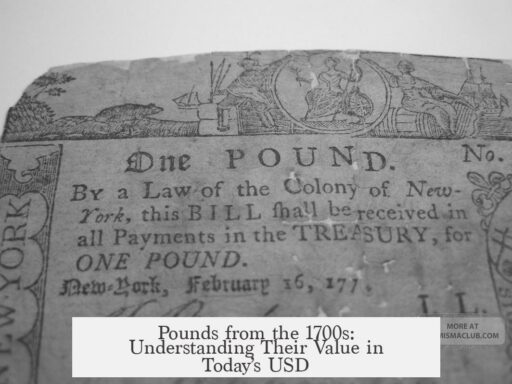Glass windows were first used during the Roman era, around the first century AD, but the quality was poor and the glass was often opaque. Before glass, people employed various alternatives to admit light while protecting interiors from drafts and weather.

Prior to glass windows, several materials served as window covers. In East Asia, especially China, Korea, and Japan, paper windows were common. These translucent paper panels allowed light to enter while providing insulation. In Europe, flattened animal horn was an early substitute. Records show its use as early as the 14th century to create a semi-transparent barrier.
Poor people often covered window openings with oiled cloth or parchment. These materials helped block drafts and let some light through but offered limited visibility. This need partly explains why older homes typically had very small windows—larger openings would have been harder to insulate without glass technology.

The Romans pioneered glass window use. Roman glass, while innovative, was thick, dull, and uneven. The making process involved blowing glass into a balloon shape and flattening it, yielding panes full of bubbles and ripples. Due to the complexity and cost, glass was only affordable for the wealthy and used in small sections.
Some of the earliest colored glass fragments, dating from about 800–820 AD, were found in Italy at the Abbey of San Vicenzo. This shows that colored glass usage had begun by the early medieval period.

The 12th century marked a significant evolution in glass windows. Better furnaces enabled improved glass quality. Stained glass became popular, especially in European cathedrals, where vibrant decorative windows adorned religious buildings. Most flat glass of the 13th and 14th centuries, produced mainly in France, served ornamental purposes in churches.
At that time, windows consisted of small glass pieces set within lead cames, creating lattice panels known as lead windows. Because glass manufacturing was costly, only the rich could afford such construction. The intricate stained glass windows required skilled artisans and labor-intensive processes.

England lagged behind continental Europe in glass window adoption. Glass windows started becoming common for ordinary English homes only in the early 17th century. English glassmakers discovered that adding lead oxide enhanced glass strength and durability, producing thicker panes.
France developed advanced glassmaking techniques centuries earlier but kept these methods secret to maintain higher prices. Their technology allowed for the production of finer, clearer glass pieces up to 6 feet (1.8 meters) in diameter. This gave French glass an advantage over contemporary English glass for several centuries.
The 18th and 19th centuries saw further advancements. By the 18th century, glass became more popular. Its manufacture required grinding and polishing, which was laborious. Steam engines eased production during the 19th century, allowing larger and better-quality panes. German innovation introduced new ways to create bigger glass sheets.
Nevertheless, glass remained expensive, partly because of the “window tax” in some countries. It was often reserved for the best rooms in larger houses. By the 19th century, plate glass was employed widely for commercial buildings like stores and offices. Industrializing glass manufacturing shifted production to the United States.
| Century | Glass Window Development |
|---|---|
| 1st Century AD | Romans create first glass windows, poor quality and small panes |
| 12th Century | Stained glass windows in cathedrals; better furnaces |
| 13th–14th Century | France manufactures decorative flat glass for churches |
| Early 17th Century | Glass windows common in English homes; improved lead oxide glass |
| 18th–19th Century | Steam engine aids mass production; plate glass in commercial buildings |
| 1903 | Laminated glass invented for safer, larger undivided panes |
The 20th century introduced laminated glass in 1903. This innovation involved sandwiching a plastic film between two glass sheets. This made windows safer and stronger, permitting larger panes without supportive leaded divisions.
- Before glass, people used paper, oiled cloth, parchment, or animal horn for windows.
- Romans first used glass windows around the 1st century AD; initial glass was translucent and costly.
- Medieval cathedrals popularized stained glass from the 12th century onward.
- England adopted household glass windows in the 17th century, improving quality with lead oxide.
- 18th and 19th century innovations and industrialization increased availability but remained costly.
- Laminated glass developed in the early 20th century enhanced safety and window size options.
When Were Glass Windows First Used and What Measures Were Used Before Glass Windows?
Glass windows first appeared with the Romans around the first century AD, but they were far from the clear, flawless panels we know today. Glass was costly and of poor quality back then—think of it as trying to look out through a bubble wrap filled with air bubbles instead of a window. But before glass windows became a thing, people got creative with other materials to keep the elements out without sacrificing light or airflow.
Curious about what folks used before glass windows graced homes? Let’s explore these early measures, their ingenuity, and how glass slowly evolved to become a regular feature in architecture.
Measures Used Before Glass Windows: Nature and Necessity
Before the luxury of glass, inhabitants around the world used what was available to shield themselves from wind, rain, and cold, while still letting some light sneak in.
- Paper Windows in East Asia: Imagine delicate rice paper acting as a window! In China, Korea, and Japan, paper windows were widespread. These were lightweight, cheap, and allowed soft light into rooms. Perfect for those chilly winter days but don’t expect them to withstand a storm or nosey neighbors.
- Flattened Animal Horn: Dating back to the 14th century, some Europeans used flattened animal horn as an alternative to glass. Horn is translucent and tougher than paper—sort of like nature’s early plastic wrap—offering better insulation and a bit more privacy.
- Oiled Cloth or Parchment for the Poor: Not everyone had access to horn or paper, so many poor households resorted to oiled cloth or parchment. Coated with oil to enhance translucency, these materials blocked the draft while admitting minimal light. The small windows in old cottages are a testament to this practice—tiny holes to keep the heat in and the cold out.
Isn’t it fascinating how people from different continents crafted solutions tailored to their environments, using materials at hand? These stops-gap measures reflect a brilliant if humble beginning towards transparent architecture.
First Use of Glass Windows: The Roman Start and Medieval Innovations
The Romans took a leap forward by introducing glass for windows around the first century AD. However, this early glass was often less transparent and more opaque than modern versions. The glass was blown into balloon shapes and then flattened—with results that produced ripples and bubbles rather than a clear view.
Still, it was an important breakthrough, making interiors less exposed to weather while allowing daylight to filter in. A fancy elite perk in those days since glass was expensive and hard to make.
Fast forward to circa 800–820 AD, and colored glass windows show up in places like Italy’s Abbey of San Vicenzo. By the 12th century, better furnaces enabled improved glass quality. European cathedrals showcased vibrant stained glass windows, using vivid colors and detailed designs to inspire awe and tell stories.
Medieval times also popularized lead windows—small glass pieces held together by lead strips forming gorgeous lattices. These windows were expensive, a symbol of wealth, and necessary to manage the fragile glass panes.
Think of these lead-framed windows as the medieval equivalent of today’s stained glass art installations—both functional and pretty.
Later Developments: When Glass Became Mainstream
England only saw glass windows (leadlights) become common in ordinary homes by the early 17th century. The English discovered that adding lead oxide to glass produced thicker, more durable panes. Across the Channel in France, glassmakers had already developed superior, secret techniques to produce fine, large, and clear glass pieces up to 6 feet wide. The secretive nature kept prices steep, so only the rich could afford these big windows.
In the 18th century, the steam engine and industrial advances made producing glass easier, though the manufacturing process still involved heavy grinding and polishing. Still quite pricey, glass was usually reserved for prominent rooms in grand houses, especially considering the infamous window tax that charged homeowners based on the number of windows in their buildings. Talk about paying extra to let light in!
By the 19th century, large plate glass windows became popular in shops and offices, especially in the United States where glass manufacturing shifted. The new method involved pushing molten glass between rollers to create flat sheets—much like rolling out dough, but way hotter.
20th Century and Beyond: The Safety Revolution
In 1903, the invention of laminated glass changed the game again. By sandwiching a plastic film between two glass sheets, windows became safer and more secure. Larger panes could be made without the need for glazing bars, giving buildings a sleek, modern aesthetic and better protection against accidents or break-ins.
Why Does This History Matter Today?
Understanding the journey from paper to pioneering glass windows reveals how humans adapted to their environments using available resources. It also sheds light on how innovation often follows necessity. Those chicken-wire paper windows or flattened horn panes were stepping stones toward the crystal-clear views we enjoy now.
Next time you admire the large glass window in your home or office, think about the hands that crafted the first fragile glass in Roman times, or the ingenuity of East Asian paper windows defending against the cold. Every pane carries a story, combining art, science, and centuries of human effort to connect us to the outside world without exposing us to its harshness.
So, what’s your view? Would you swap your modern window for a paper or horn panel just to live history, or do you appreciate clean glass too much? Either way, history shows the grand evolution of how humanity learned to balance light, comfort, and protection—one translucent layer at a time!
When did people first start using glass for windows?
The Romans were the first known users of glass windows in the first century AD. Their glass was opaque and had poor quality compared to modern glass.
What materials were used to cover windows before glass was invented?
Before glass, people used paper windows in East Asia, flattened animal horn from the 14th century, and oiled cloth or parchment for draft protection, especially among poorer populations.
Why were early glass windows so small and costly?
Early glass was expensive and made in small pieces. The process involved blowing glass into balloons, then flattening them, which resulted in glass full of bubbles and ripples.
How did stained glass windows develop in medieval times?
By the 12th century, stained glass was common in European cathedrals. France produced decorative glass panes through the 13th and 14th centuries, mainly for religious use.
When did glass windows become common in ordinary homes?
In England, glass windows became common in ordinary homes only in the early 17th century, helped by improvements in glass durability using lead oxide.
What major advances in glass window production happened in the 19th century?
The 19th century saw large panes made by rolling glass on steel tables, industrial plate glass for stores and offices, and the rise of American glass-making centers. This made better glass more accessible.




